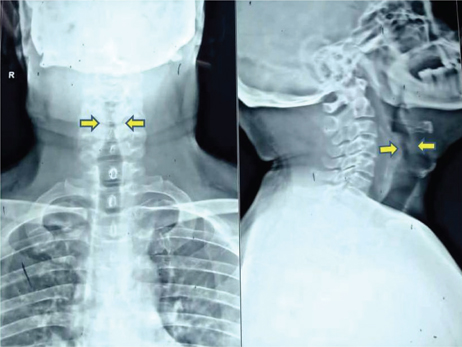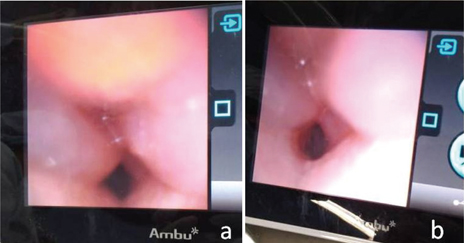J Dent Anesth Pain Med.
2019 Feb;19(1):73-75. 10.17245/jdapm.2019.19.1.73.
Post-radiation airway management - An anesthesiologist's challenge
- Affiliations
-
- 1Department of Anesthesia and Critical Care, IMS & Sum Hospital, Bhubaneswar, Odisha, India. bhavna.sriramaka@gmail.com
- KMID: 2439038
- DOI: http://doi.org/10.17245/jdapm.2019.19.1.73
Abstract
- No abstract available.
Keyword
MeSH Terms
Figure
Reference
-
1. Balakrishnan M, Kuriakose R, Koshy RC. Radiation induced changes in the airway-anaesthetic implications. South African J Anaesth Analg. 2004; 10:19–21.
Article2. Egan TD, Wong KC. Predicting difficult laryngoscopy for tracheal intubation: an approach to airway assessment. Ma Zui Xue Za Zhi. 1993; 31:165–178.3. Biebuyck JF, Benumof JL. Management of the Difficult Adult Airway With Special Emphasis on Awake Tracheal Intubation. Anesthesiology. 1991; 75:1087–1110.
Article4. Kuriakose R, Mathew A, Koshy R. Screening tests for predicting difficult endotracheal intubation. A clinical assessment in facio-oromaxillary and neck malignancy patients. J Anaesth Clin Pharmacol. 2003; 19:37–44.5. Huitink JM, Balm AJM, Keijzer C, Buitelaar DR. Awake fibrecapnic intubation in head and neck cancer patients with difficult airways: New findings and refinements to the technique. Anaesthesia. 2007; 62:214–219.
Article
- Full Text Links
- Actions
-
Cited
- CITED
-
- Close
- Share
- Similar articles
-
- Perioperative Management of Newborn Pharygeal Teratoma
- Fiberoptic bronchoscope and C-MAC video laryngoscope assisted nasal-oral tube exchange: two case reports
- Anesthetic Management of Airway Reconstruction Surgery: A Review of 15 Cases
- Tube or tubeless: an anesthetic strategy for upper airway surgery
- Anesthesia for airway surgeries under the perioperative venovenous extracorporeal membrane oxygenation: Three case reports



